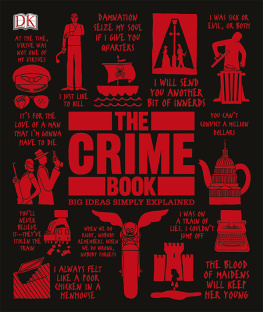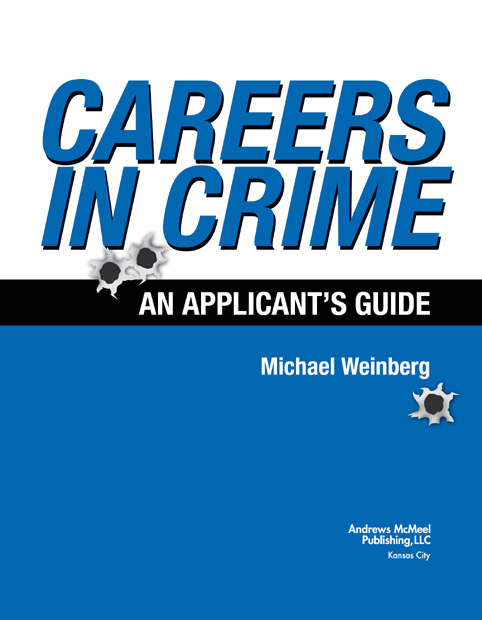Careers in Crime copyright 2007 by Michael Weinberg. All rights reserved. Printed in the United States of America. No part of this book may be used or reproduced in any manner whatsoever without written permission except in the case of reprints in the context of reviews. For information, write Andrews McMeel Publishing, LLC, an Andrews McMeel Universal company, 4520 Main Street, Kansas City, Missouri 64111.
E-ISBN: 978-0-7407-8895-6
Library of Congress Control Number: 2005933798
Cover design by John Turnbull
www.andrewsmcmeel.com
ATTENTION: SCHOOLS AND BUSINESSES
Andrews McMeel books are available at quantity discounts with bulk purchase for educational, business, or sales promotional use. For information, please write to: Special Sales Department, Andrews McMeel Publishing, LLC, 4520 Main Street, Kansas City, Missouri 64111.
specialsales@amuniversal.com
CONTENTS
HOW WE RATE
THE CAREERS IN CRIME 50
W e are often told that the ideal job is the one wed do for free. So how do we find that fabled job? Sadly, there is no magic formula for matching worker to workplace. The happy alternative worker balances complex economic, physical, and psychological factors to sustain a harmonious, independent life. Suppose you get that overdue promotion to Hit Man (page 88). The hours are good, the perks are generous, and theres plenty of room for advancement. Yet, if you are unaccustomed to strict deadlines, frequent law enforcement interactions, and severe sentencing risk, you may be miserable. To be successful in his or her chosen profession, the career-minded criminal must factor in his or her temperament, abilities, legal history, and ethical orientation to meaningfully assess real-world opportunities.
THE FACTORS
Ignorance is a crime that never pays. If you really want to bulletproof your career choices, get to know your options and yourself. Careers in Crime offers the most actionable collection of information on criminal occupations ever assembled. In addition to eyewitness profiles of fifty major American criminal careers, we score and rank each job according to:
1. COMPENSATION AND REWARDS
2. ENFORCEMENT AND PENALTIES
3. STRESSES AND HAZARDS
4. WORK ENVIRONMENT
THE FORMULA
Ranking careers is a pretty subjective business. Weve done our best to identify the essential building blocks of job satisfaction and to combine them in intuitive, meaningful ways. Each ranking component incorporates two subfactors that receive letter grades ranging from A to F. These letter grades correspond to numerical scores. Some factors weigh more heavily than others. An A in Earnings, for example, adds 60 points to a jobs overall numerical merit. The same grade in the related Perks category counts for just 20 points. Sectional scores are combined to calculate an occupations overall score and numerical rankingwith the ideal job theoretically earning a score of 260 points and ranking number one among all criminal careers.

I. COMPENSATION AND REWARDS POINTS
II. ENFORCEMENT AND PENALTIES
| a. Frequency of Arrests | 40 |
| b. Severity of Sentencing | 40 |
III. STRESSES AND HAZARDS
| a. Dangers | 40 |
| b. Pressures and Demands | 20 |
IV. WORK ENVIRONMENT
| a. Hours | 20 |
| b. Comfort | 20 |
| TOTAL | |
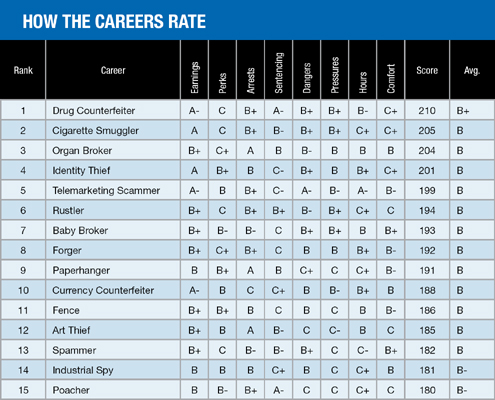
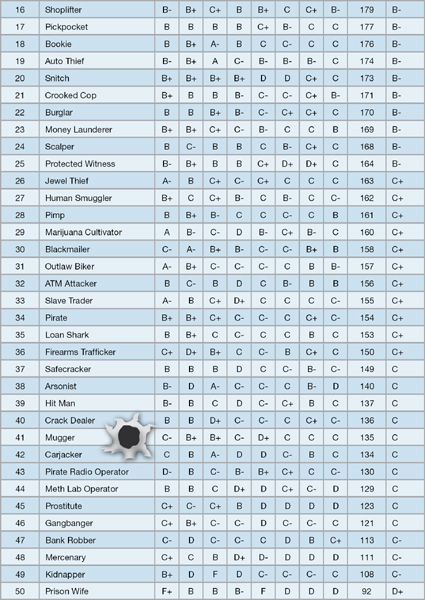
HAVE GUN, WILL TRAVEL

THE HOOKUP
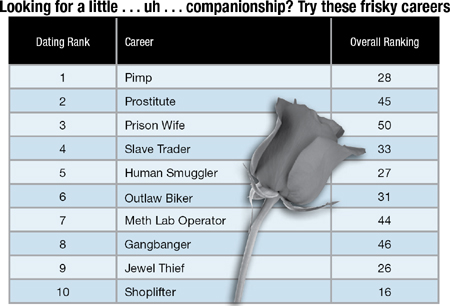
ARSONIST
RANK: 38 out of 50 AVERAGE GRADE: C
DUTIES: Arsonists, a.k.a. torches, intentionally set fire to commercial, residential, and institutional structures, as well as to vehicles, forests, farmlands, watercraft, and other assorted combustibles. About one-quarter of all activity in the arson sector is attributed to profit seekers. Money-motivated business or property owners commit or commission acts of arson to secure fraudulent insurance settlements, dispose of unprofitable inventories, illegally eject objectionable occupants, demolish protected structures, dissolve contracts, or discharge onerous obligations. Although pyromaniacs loom large in the popular imagination, such lighter-loving characters actually account for only about 1/10 of 1 percent of arson arrests. Nihilistic juveniles are implicated in 42.1 percent of domestic flare-ups. Adult revenge-seekers are credited with 14 percent of arson fires, and 7 percent are set to cover other crimes (including suicide, which accounts for one-third of all fiery fatalities in Japan).
In most cases, arson professionals strive to maximize incendiary devastation, while conveying the look and feel of accidentally induced combustion (and allowing ample time for easy exits). Expert torches are meticulous in their selections of site-appropriate points of origin, accelerants, fuels, and ignition systems. Amateurs, on the other hand, often start accelerant-aided fires near furnaces, electrical outlets, fireplaces, or heat-producing appliances. Arson investigators know that accidental fires typically start above floor level and travel upward. Clumsily set fires usually burn down to floor level or below.
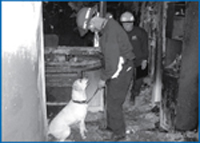
MANS BEST FRIEND CAN BEAN ARSONISTS WORST ENEMY
K-9 patrol pet Rosie learns to detect liquid accelerants at a Bureau of Alcohol, Tobacco, Firearms and Explosives training school.
Source: Santa Clara, California, Fire Department
In one recent study, three out of four for-profit flamb artistes employed delayed-ignition devices. Many pros favor multiple points of ignition that they connect through flammable trailers. On the downside, trailers carry a substantially higher risk of evidentiary persistence and periodically cause the accidental immolation of inexperienced handlers.


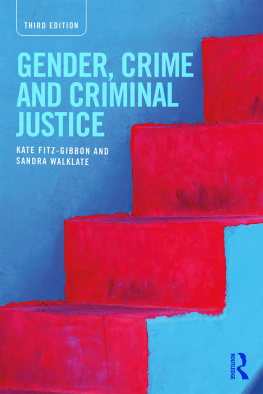
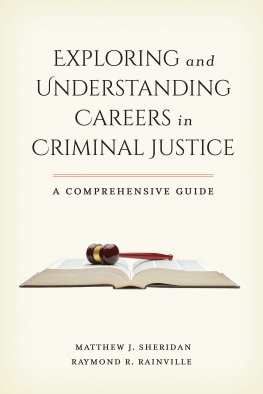


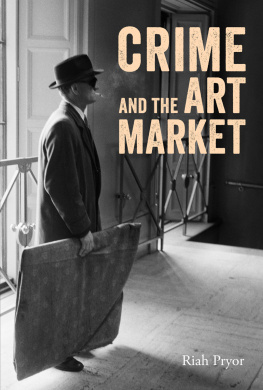
![Laura L. Finley - Crime and Punishment in America: An Encyclopedia of Trends and Controversies in the Justice System [2 Volumes]](/uploads/posts/book/305562/thumbs/laura-l-finley-crime-and-punishment-in-america.jpg)
